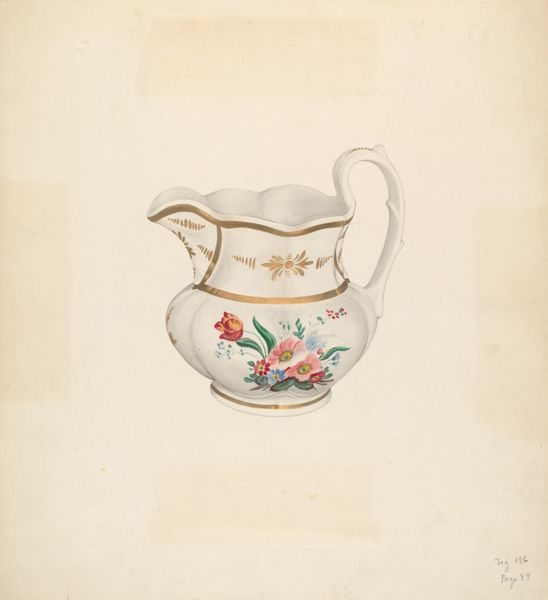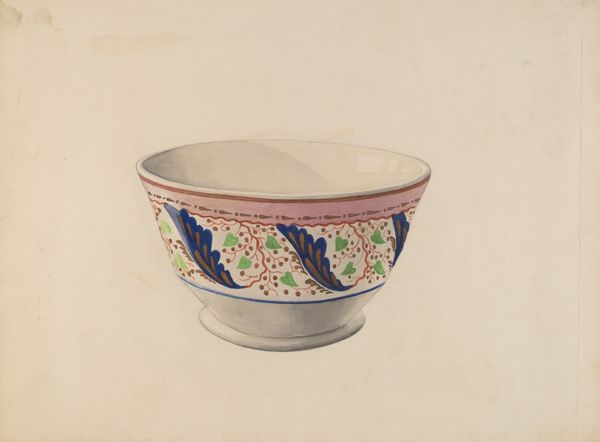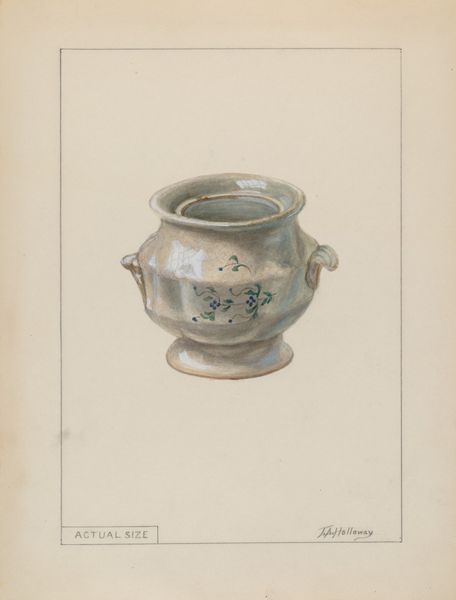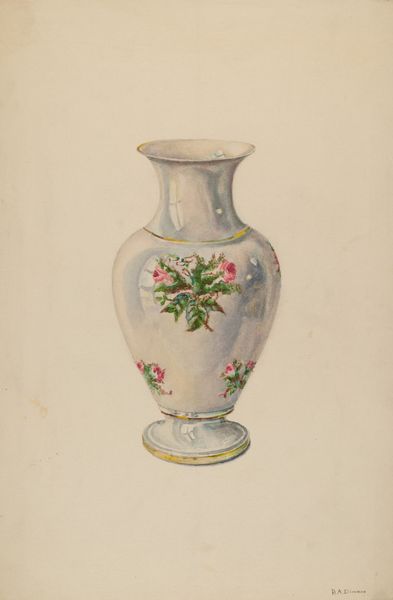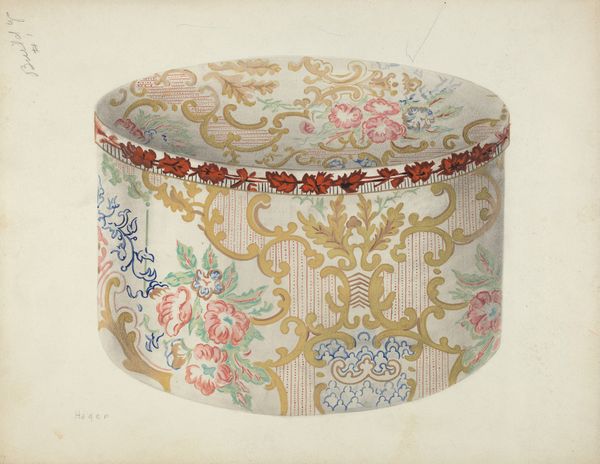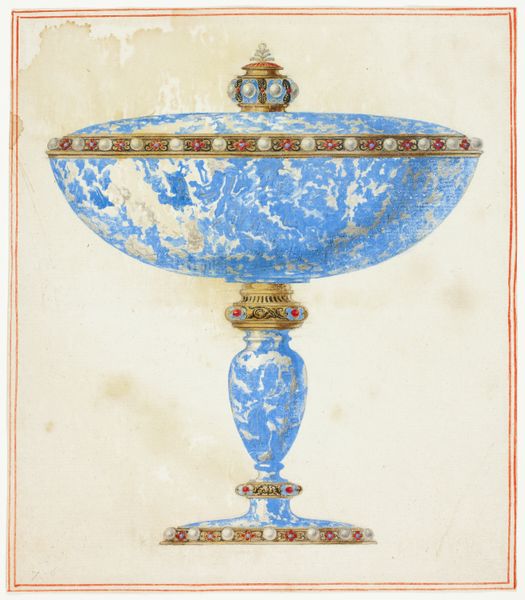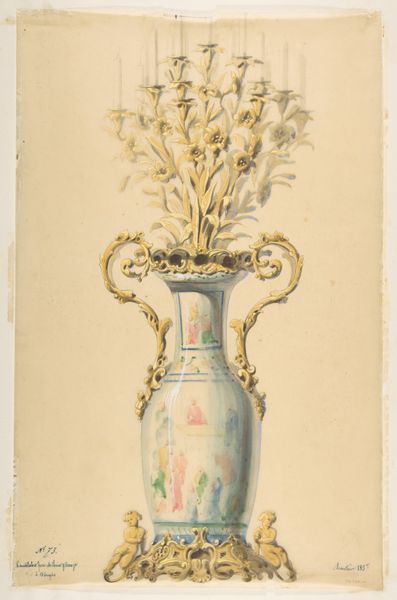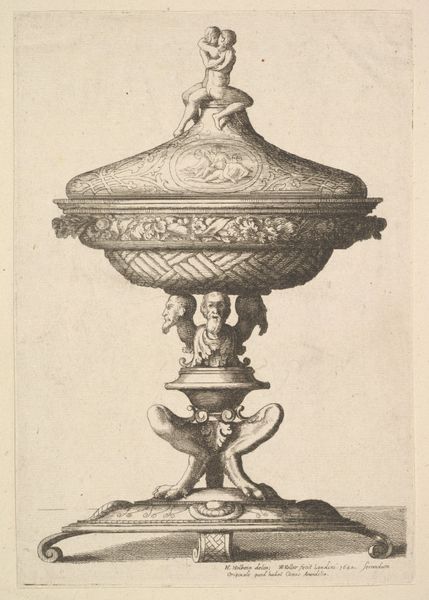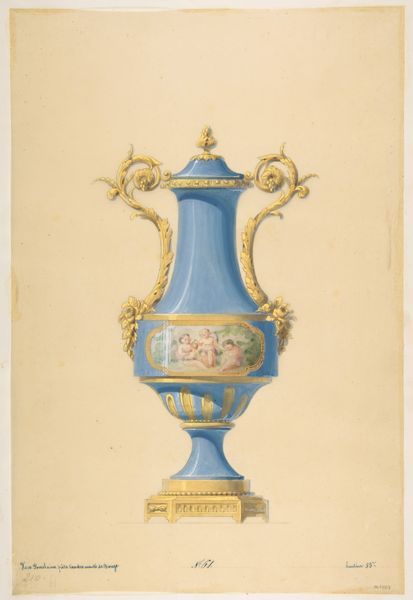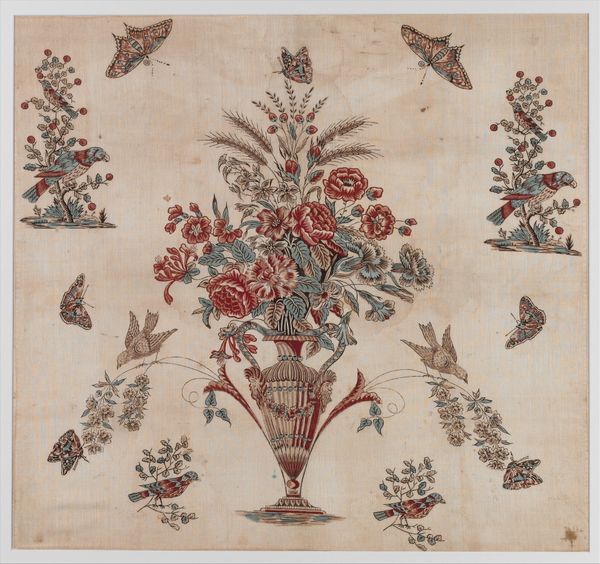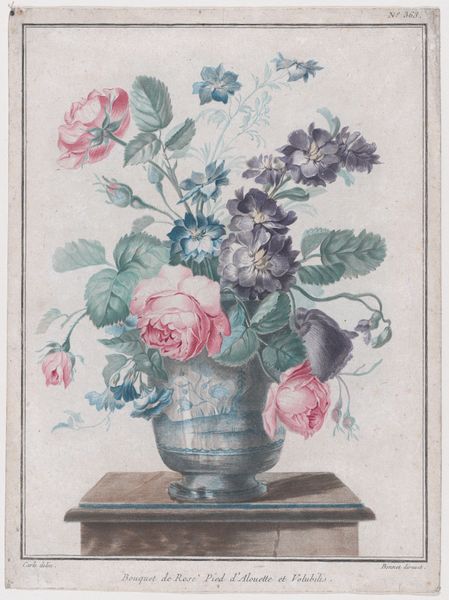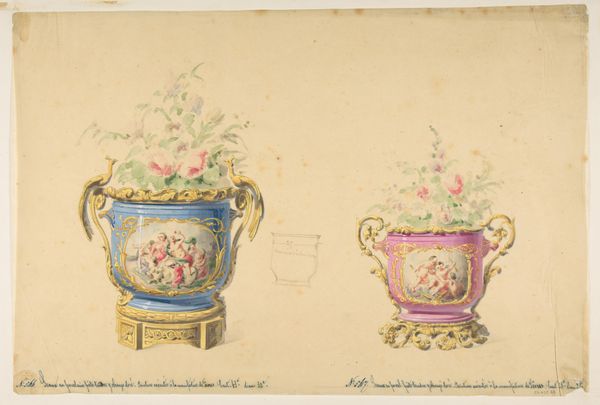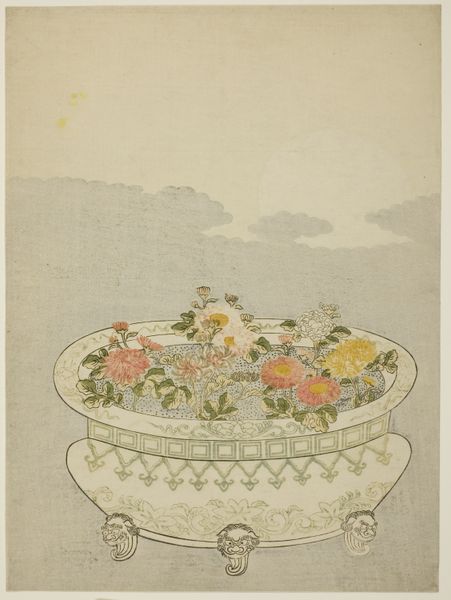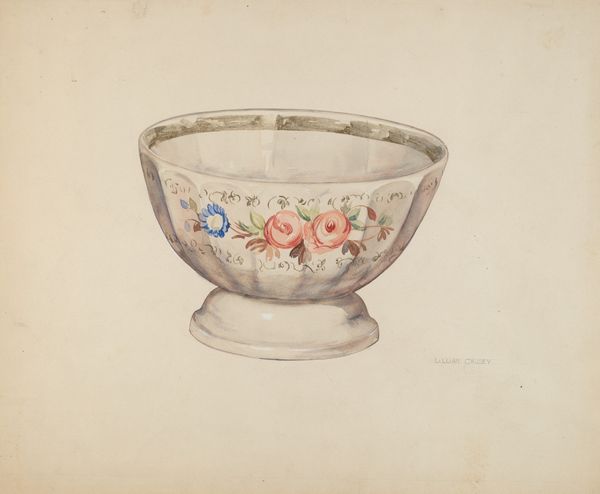
ceramic, earthenware
#
dutch-golden-age
#
ceramic
#
earthenware
#
stoneware
#
ceramic
Copyright: Rijks Museum: Open Domain
Editor: Here we have a ceramic teapot, dating from about 1700 to 1740. It’s decorated with this beautiful blue and white pattern. What do you see in this piece beyond its obvious function? Curator: This teapot reflects the profound impact of global trade on Dutch society during its Golden Age. The blue and white ceramic clearly imitates Chinese porcelain, which was highly prized but difficult to obtain at the time. This Dutch earthenware version allowed access to that aesthetic for a wider audience. Editor: So, it's not just a teapot, but a statement about access and maybe even aspiration? Curator: Precisely. The imagery is also important. The motifs likely blended Chinese-inspired designs with local Dutch tastes, reflecting the negotiation of cultural identities in a globalized world. These objects populated a rising middle class in Europe, didn't they? Editor: Absolutely, I think knowing that the imagery itself is this cross-cultural blend really shifts my perspective. It’s less about pure imitation and more about creating something new through exchange. Curator: Yes, and think about how these "exotic" goods were displayed and used, reinforcing social status and shaping domestic life. Did this impact other production designs? Editor: That makes me wonder about how these kinds of everyday objects contributed to shaping cultural values and tastes beyond the wealthy. I appreciate how that changed what I saw. Thanks. Curator: And I was remined that the political can occur anywhere, in a museum or our own home, enriching meaning to those things, small and large.
Comments
No comments
Be the first to comment and join the conversation on the ultimate creative platform.
